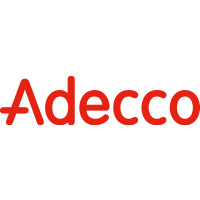I don't think DLSS changes things in any meaningful way. I agree that we don't have good information about the
absolute performance of DLSS on a GPU this small, but what I'm talking about here is
relative performance. That is, if the system is capable of using DLSS to at least 1440p in docked mode, then it should be capable of using DLSS to 1080p in portable mode. To know that, we need to answer two questions. Firstly, is DLSS performance proportional to resolution? (eg if 4K has 4x more pixels than 1080p, will DLSS with a 4K output take 4x as long to run?). Secondly, does DLSS performance on an individual GPU scale proportionally with clock speed?
For the first question the performance data Nvidia published in the
DLSS programming guide should be plenty. I wrote about this before
here, and I won't repost the whole thing, but will just quote this sentence:
For the second question, I was hoping to provide some good data of my own. I've been playing around with Nvidia's RTXDI sample application recently, and it occurred to me that it provides a variety of performance metrics, including the time taken for the DLSS pass if it's used. Unfortunately, since the last time I played around with my GPU clock speed, Nvidia has decided to remove support for consumer GPUs from most features in nvidia-smi, meaning I don't have an easy way to limit clock speeds. I tried doing the same thing with Afterburner, but it's quite frustrating (and crashed my PC once during testing), so I only got four data points. These are on a desktop RTX 3070 with a 1080p image scaled from 540p:
Code:
MHz DLSS ms
1920 0.50
1470 0.68
1350 0.71
1100 0.81
One quick thing to note is that the performance here at the peak clock of 1.92GHz is a bit worse than Nvidia states for the RTX 3070 at 1080p in the performance guide (0.50ms vs 0.41ms). The RTXDI sample application is particularly intensive, which may contribute to this, or the number it's reporting may include some overhead left out of the numbers in the performance guide.
Keeping in mind some noise in the data, between Afterburner not wanting to hold a stable clock and me reading a varying number off a screen, it's pretty linear. This shouldn't be that surprising, but I was actually expecting a less-than-linear drop off from the peak frequency of 1.92GHz, with it potentially being bandwidth-limited rather than compute-limited at that point, but this would suggest it's not. I had hoped to do some proper bandwidth testing on it too, but again Nvidia's decision to hobble nvidia-smi makes that challenging.
In any case, evidence would suggest that DLSS performance is relative to both resolution and clock speed, and those should both hold up on smaller GPUs. The question of whether a GPU the size of T239's has the absolute performance necessary to hit 1440p or better is docked mode is a different question, which is why I put statement 1 in at the start. If the system isn't designed around 4K (or resolutions greater than 1080p) in docked mode, then I don't expect a 1080p panel for portable play. Which, honestly I wouldn't have a huge problem with, but the evidence seems to suggest Nintendo are pushing for 4K output with this, and it would be reasonable to expect they're planning on using DLSS to do so.
Also, while I understand where you're coming from in terms of PS4 ports, I don't think that's going to factor into Nintendo's thinking in any meaningful way. This device, like the Switch, will be designed primarily around the needs and/or desires of Nintendo's internal development teams. They will of course take third party feedback into account, and will be happy to accommodate third parties where possible, but "this system should display low-effort PS4 ports in portable mode in the most faithful way possible" will be about a thousand rungs down on the priority list compared to "this system should make the new Mario and Zelda look as good as possible". I don't think every game on the new system will use DLSS, but I fully expect Nintendo's major first party titles to, and I feel like that will be (and probably should be) Nintendo's main concern.
I've been saying for a while that I expect something like the original Switch reveal trailer for the hardware announcement; a video a few minutes long that quickly and succinctly conveys the concept and appeal of the system. However, thinking about it more, a video like that for [redacted] would be basically identical to the original video. Swap in some nicer graphics in the gameplay segments and maybe Elden Ring instead of Skyrim, but the original video wasn't really about the games or the graphics, it was about the general concept of the Switch as a hybrid system which could be used for docked or portable play.
If [redacted] is a similar hybrid system, then a video like that, focussed on how you use it, isn't going to do them much good because it will just look like the original Switch. Nintendo need to emphasise the differences between the new system and the original Switch, and it seems like one of the major differences is "more powerful/prettier graphics", which would warrant a bit more explanation. Perhaps something like a mini Direct where Koizumi explains the improvements, interspersed with short "lifestyle" segments like the original Switch video.
I'd still expect something maybe 3-4 minutes long. Full length directs don't get anywhere near the number of views of shorter videos and trailers, so having a short initial reveal is important to hit as many people's eyeballs as possible.

www.adecco.co.jp






